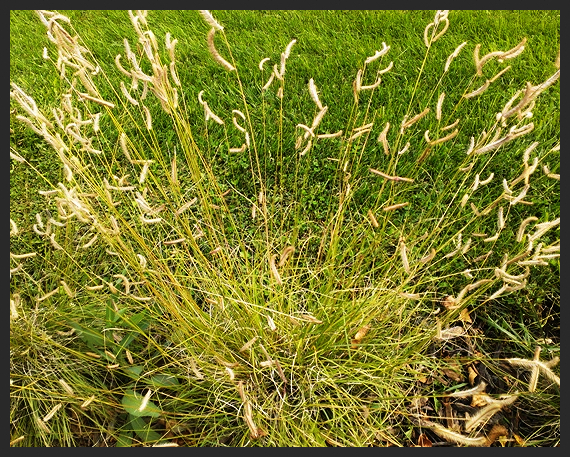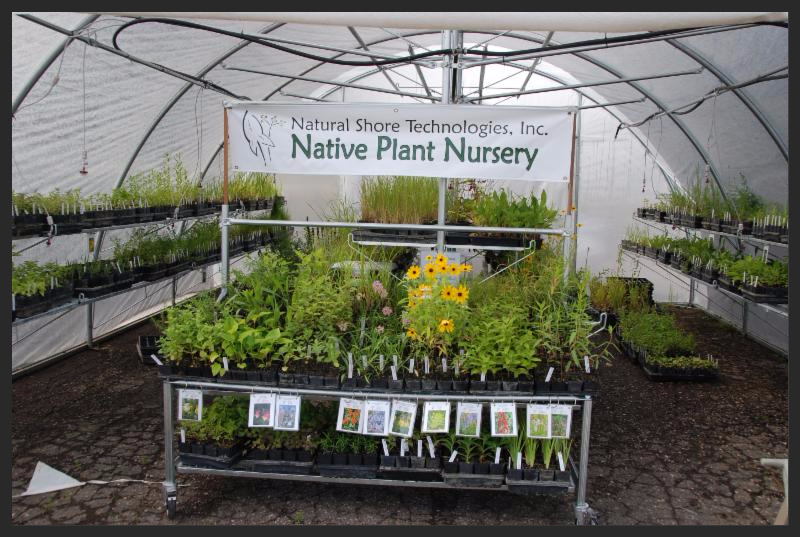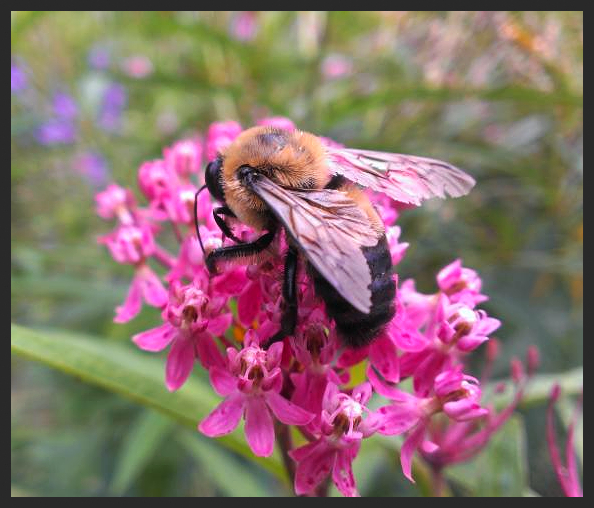|
September Article
|
Beautiful Prairie Grasses are Gaining Respect
A decade ago, we could remember when most of our clients would most often ask for showy flowers like cardinal flower, blazing star, or butterfly milkweed. But times are changing, and while our native flowers are amazingly beautiful, it seems like the multitude of native grass species we have in the Minnesota are gaining some much deserved recognition. Fall is the perfect time of year to notice the native grasses. They are showing off their intricate seed heads and turning color. Here are a few native prairie grasses you can now find in our retail nursery. These low maintenance species will certainly add aesthetic interest, diversity, and wildlife habitat to your garden or restoration area.
Indian Grass
Sorghastrum nutans-
An iconic prairie grass, Indian grass can grow from 3-7 feet tall and does well with sun or partial shade in dry to moist soil. Its flower is an attractive golden plume that fans out at first but then grows more erect as the seed matures. It is also a very important plant for wildlife, offering food to deer and nesting habitat for the bobwhite quail.
 Big Bluestem Big Bluestem
Andropogon gerardii-
This robust plant is a dominant grass species in the tallgrass prairies of the American Midwest. It can grow 2-7 feet tall. Its main roots are long and can reach down to 10 feet! This grass adds seasonal color with the leaves starting out with gray-green to blue-green colors in the spring, changing to reddish tinges in the summer, and finally ending with rich bronze and coppery colors in the fall. The flower stalk also has 3-parted heads that are purplish in color. The seed head configuration looks like a "Turkey's foot", which some people use as its common name. Big Bluestem grows well in full sun or part sun in medium to dry, well-drained soils. This grass is also very drought tolerant. It is the host plant for the skipper butterfly and also provides shelter for birds and insects. Songbirds and prairie chickens also eat their seeds.
Little Bluestem
Schizachyrium scoparium-
This beautiful grass forms dense clumps that grow 1-3 feet tall. It is another very iconic grass from our once expansive prairies. It grows in sun and partial shade in dry, sandy soils and is very drought tolerant. The leaf color can range dramatically in this species, from minty greens to deeper blues and purples; it offers an eye catching assortment of dramatic clumps of color. In the fall the flowers become white and feathery, and the grass blades start turning a deep coppery red color that lasts all winter! It is also a host plant for several native butterflies and provides cover and habitat for wildlife all year long.

Blue Grama
Bouteloua gracilis
-A short, warm seasoned grass that stays in tight clumps; blue grama is a lovely addition to any restoration. It looks delicate but is tough and durable with a dense root system that helps it tolerate drought. It is easily grown in full sun or part sun with dry to medium well-drained soils. A fascinating feature about this plant is that their seed heads are attached to the stems at right angles, making it look like an eyelash. These heads are initially a silvery color, but mature to reddish-purple hues in the fall. Blue grama is a larval and nectar source for skipper butterflies and their seeds are eaten by a variety of native birds. Other common names for this species are mosquito grass, graceful grama grass, eyelash grass, and signal-arm grass.
Bottlebrush Grass
Elymus hystrix-
This is a very interesting looking grass that blooms from June to August. Its seed heads look like bristles of a brush and the grass leaves are an attractive bright green color. It turns to a tan
color in the fall. Bottlebrush is a perfect plant for shady areas or under trees. It can be used as a specimen plant in perennial gardens. It grows 2-5 feet and does best in dry to moist sandy soils. It is also deer resistant! This grass is an important host plant for several native butterflies and moths.
In addition, our native grasses form an essential foundation and structure for our ecological restorations - prairies, savannas, wetlands, and shoreland areas. In yards, they can also be used to define boundaries between turf lawn and your natural areas. Little Bluestem and Blue grama are great grasses for this because they stay in short, tight clumps. In large restoration areas, a variety of grass species adds ecological diversity, essential habitat, and resiliency.
So next time you are thinking about bumping up your species count or adding another natural area - think native grasses! Our retail nursery currently has all of the species listed above and many more.
Come visit us September 18th and 19th for our 25% off sale and, of course, check out our flowers - but don't forget our amazing native grasses!
|
|
Retail Nursery Sale!
|
25% OFF ALL STOCK!

September 18th and 19th
10AM-4PM
At our retail nursery location in Maple Plain
5300 Hwy 12
|
|
Native Plant of the Month
|
Side Oats Grama 
Bouteloua curtipendula
Moisture: Moist or Dry
Exposure: Sun or Partial Shade
Color: Green then tan in the fall
Bloom: July to August
Height: 1-3 Feet
A bunching, deeply rooted, warm-season short grass that grows from short slender rhizomes. The erect wiry clumps have oat-like spikelets dangling from one side of the stalk. The protruding stamens are showy and bright orange. The leaves are rough along the margins and with hairs at the base of the leaf blades. The leaves turn light tan and sometimes develop purple and red hues in the fall. It is an important range grass species eaten by livestock. This prairie grass is also very drought resistant and is adapted to a wide range of soil types. Side Oats grows in sun and part sun in moist to dry soil and is found in dry prairies, open rocky woodlands, dunes,and bluffs.
|
|
Invasive Plant of the Month
|
Prickly Lettuce 
Lactuca serriola
Exposure: Sun or partial shade
Moisture: Dry to moist
Height: 2-6 Feet
Blooms: July-September
A weedy annual/biennial from Europe, Prickly Lettuce grows in disturbed soils, along roadsides, and in fields. Leaves are about a foot long, lance-shaped, and deeply lobed. The leaves of this plant have tiny teeth and thorns along the edges of the leaf and along the underside of the midrib. The leaf color is distinctly blue-green and is attached to a light colored stem. The flowers are small and yellow. There can be many of them on one plant as it branches out near the top. The seed is attached to fluff that is carried away in the wind. When broken, the plant leaves also emit a latex sap. Management strategies include hand pulling, mowing, and removing seed heads.
|
Brown Belted Bumble Bee 
Bombus griseocollis
Range:Common throughout the Eastern United States and the Great Plains.
Habitat: open gardens, parks, fields, and wetlands.
Identification: Black wings and head. Males have large eyes. Their hair is short and the thorax as thin bands of brown.
Pollination: These bees love Monarda species, Milkweed species, blue vervain, pale purple coneflower, and many other native plants!
|
|
|
Come visit us at our Retail Nursery location! 5300 Hwy 12 in Maple Plain!
Visit us at our upcoming
25% OFF SALE!
September 18th and 19th from 10AM-4PM
Click and visit our website for current
|
|
|